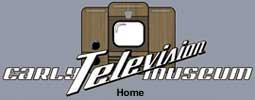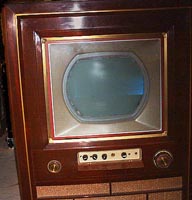THE SETRepair or Restore?It's clear that the world runs on more than one set of rules. So if you're using the information on this site to restore a CT-100 or any other 15GP22-based set, be aware that there is a choice you have to make. Are you going to repair the set by replacing failed components? Or are you going to restore the set by replacing not only failed components but those affecting reliability. "If it ain't broke, don't fix it," admonishes a collector to repair a CT-100. The first six years of this restore-a-TV site used that philosophy. Restoration looks at those components that suffer reliability issues. Over the decades, the reliability of circuits using capacitors whose dielectric is paper suffers drastically. The CT-100 was manufactured with paper capacitors. Restoration requires these considerations: >Replace ALL paper caps. Do it automatically. Don't even consider an alternative. >Check ALL resistors for correct values. Carbon resistors drift. Wirewound resistors open up. >In the case of a CT-100 and similar color sets, replace all rectifier filament windings on the flyback. These secondaries of one, two, or more turns are riding way above ground, so the old insulation can and does break down. >Also, in the case of a CT-100, check all peaking coils: the inductors are encrusted with a white material that crumbles after only forty years or so! But worse, they open up from a corrosive agent associated with the manufacturing process. (In contrast, the brown coils, randomly peppered throughout a set of inductors in a CTC-2 chassis, never fail.) >In a CT-100, the vertical convergence transformer is a constant source of danger to the focus circuit. The 4-kV focus voltage is applied to the secondary of this transformer [T12 (Sams); 3T127 (RCA)], which breaks down and partially shorts the focus voltage, raising current and, more often than not, destroying the resistance element and even partially melting the focus potentiometer. In April 2005 I shifted from CTC-2 chassis B8000173 to an equally early production run chassis, B8000194. I also shifted from repairing the first chassis to restoring the second chassis to ensure long-term reliability of my operating Merrill. Thanks to John Folsom for his sage advice, beginning in December 1999. Pete, June-05-2005.
|

